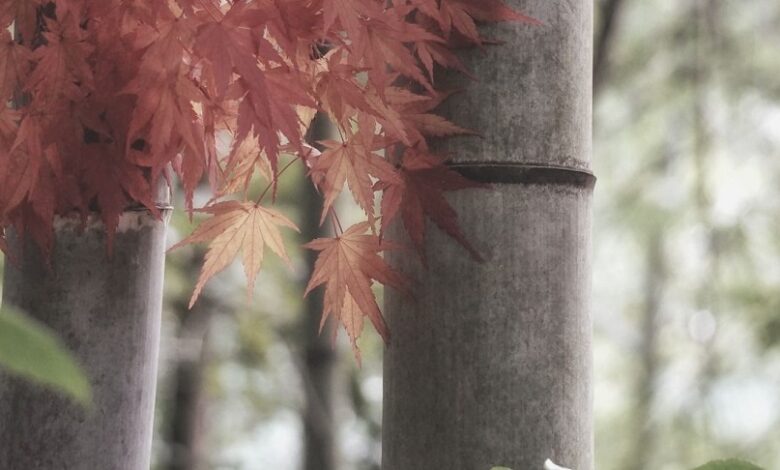Which Is Harder: Maple or Bamboo?

When it comes to choosing the right material for various applications, hardness is an important factor to consider. In this article, we will delve into the comparison between two popular materials: maple and bamboo. Both maple and bamboo possess unique characteristics that make them suitable for different purposes. By understanding their attributes, benefits, and drawbacks, you will be able to make an informed decision regarding which material is harder and more suitable for your specific needs.
Introduction to Maple and Bamboo
Maple: A Timeless Classic
Maple is a type of hardwood that has been widely used in various industries for centuries. Renowned for its strength and durability, maple wood is often preferred for flooring, furniture, cabinetry, and musical instruments. Its attractive grain patterns, coupled with its natural resistance to wear and tear, have made it a popular choice among craftsmen and homeowners alike. When it comes to different types of maple, there are some differences to consider. For instance, the red maple vs japanese maple debate is a common one among homeowners who want to add a touch of elegance and color to their landscapes.
Bamboo: Nature’s Versatile Wonder
Bamboo, on the other hand, is a rapidly renewable resource that has gained significant popularity in recent years. It is not a wood, but rather a grass that belongs to the Poaceae family. Despite its lightweight appearance, bamboo possesses impressive strength and resilience, making it a suitable alternative to traditional hardwood materials. Bamboo is commonly used for flooring, furniture, kitchenware, and even in construction due to its eco-friendly nature.
Comparing Hardness: Maple vs. Bamboo
Determining the hardness of a material involves assessing its resistance to indentation or scratching. The Janka hardness test is commonly employed to measure the hardness of different wood species, including maple and bamboo. The test involves embedding a steel ball into the wood and measuring the force required to do so. The higher the Janka rating, the harder the material.
Maple Hardness: Solid as a Rock
Maple wood typically falls within the medium to hard range on the Janka hardness scale. Hard maple, also known as sugar maple or rock maple, is one of the hardest and most durable domestic hardwoods available. It boasts an impressive Janka rating of around 1450 pounds-force (lbf), making it highly resistant to dents and scratches. This attribute explains why maple is a popular choice for high-traffic areas and heavy-use applications.
Bamboo Hardness: Surprising Strength
While bamboo is technically a grass, certain bamboo species exhibit impressive hardness comparable to hardwoods like maple. Strand-woven bamboo, in particular, is engineered to enhance its hardness and durability. Thanks to a manufacturing process that involves compressing and bonding bamboo fibers, strand-woven bamboo achieves exceptional Janka ratings. On average, strand-woven bamboo can have a Janka hardness rating of 3000 lbf or higher, surpassing many traditional hardwoods in terms of hardness.
Factors Influencing Hardness
When considering the hardness of maple and bamboo, it’s important to understand the factors that can affect their performance. Several elements contribute to the overall hardness of these materials, including:
1. Species and Origin
Different species of maple and bamboo may exhibit varying hardness levels. For example, hard maple is generally harder than soft maple, which is commonly used for decorative purposes. Similarly, certain species of bamboo, such as Moso bamboo, tend to be harder than others.
2. Age and Growth Conditions
The age of the tree or bamboo stalk can also impact hardness. Older trees tend to have denser wood, making them harder. Additionally, the growth conditions, including soil quality and climate, can influence the hardness of the material.
3. Manufacturing Techniques
In the case of bamboo, the manufacturing process plays a crucial role in determining its hardness. Strand-woven bamboo, as mentioned earlier, undergoes an intensive process that compresses and strengthens the bamboo fibers, resulting in a significantly harder material. The manufacturing technique used can greatly impact the final hardness of bamboo products.
4. Moisture Content
The moisture content of both maple and bamboo can affect their hardness. Wood and bamboo materials with higher moisture levels tend to be softer and more prone to damage. Properly dried and seasoned maple and bamboo will exhibit greater hardness and durability.
5. Finishing and Maintenance
The finishing and maintenance of maple and bamboo surfaces can also impact their overall hardness. Applying protective coatings such as varnish or polyurethane can enhance the hardness and resistance to wear. Regular maintenance, including cleaning and reapplication of protective finishes, will help maintain the hardness and appearance of these materials over time.
Applications and Considerations
Maple Applications
Maple’s exceptional hardness and durability make it a preferred choice for a wide range of applications. Some notable uses of maple include:
- Flooring: Maple flooring is renowned for its strength, stability, and timeless beauty. It is commonly found in residential and commercial spaces, especially in areas that experience heavy foot traffic.
- Furniture: Maple furniture is highly sought after for its durability and classic appeal. From tables and chairs to cabinets and dressers, maple furniture adds a touch of elegance to any interior.
- Musical Instruments: Maple is a favored wood in the construction of musical instruments, particularly for its resonance and tonal qualities. It is often used in the manufacturing of guitars, violins, drums, and pianos.
Bamboo Applications
Bamboo’s unique combination of hardness and sustainability has led to its increasing popularity in various industries. Some prominent applications of bamboo include:
- Flooring: Bamboo flooring offers a sustainable and durable alternative to traditional hardwood floors. It provides a distinctive aesthetic and is available in various styles, colors, and finishes.
- Furniture: Bamboo furniture showcases a modern and eco-friendly design. Its strength and lightness make it ideal for chairs, tables, and shelving units.
- Kitchenware: Bamboo is widely used in the production of cutting boards, utensils, and serving trays. Its natural antimicrobial properties and hardness make it a hygienic and durable choice for the kitchen.
Making the Right Choice
Choosing between maple and bamboo ultimately depends on your specific needs, preferences, and the intended application. Consider the following factors:
- Hardness Requirement: If you require utmost hardness and durability, particularly for high-traffic areas, hard maple may be the ideal choice. Its exceptional Janka rating ensures long-lasting performance.
- Sustainability: If environmental sustainability is a priority, bamboo’s fast growth rate and renewability make it an attractive option. Look for bamboo products certified by reputable organizations to ensure responsible sourcing.
- Aesthetic Appeal: Both maple and bamboo offer unique and appealing aesthetics. Consider the overall style and ambiance you want to create in your space to determine which material aligns best with your vision.
- Maintenance: Maple generally requires less maintenance than bamboo. However, proper care and maintenance, such as regular cleaning and refinishing, are essential for preserving the beauty and hardness of both materials.
Conclusion
In the debate between maple and bamboo hardness, both materials have their own merits. Maple, with its long-established reputation for durability, remains a preferred choice for various applications. On the other hand, bamboo’s remarkable hardness and eco-friendly nature have positioned it as a sustainable alternative gaining popularity in recent years.




